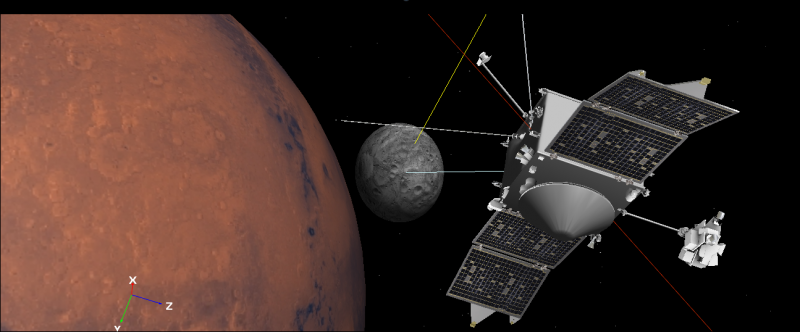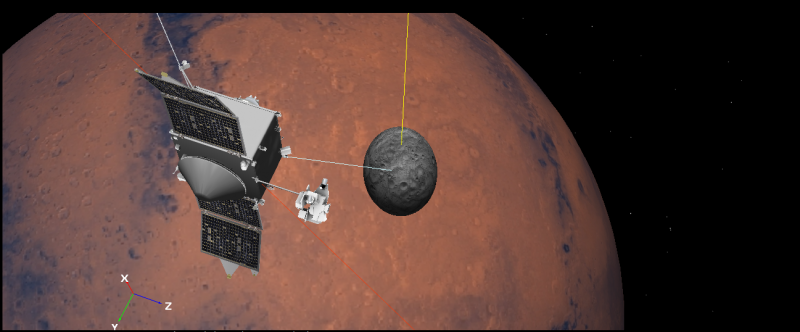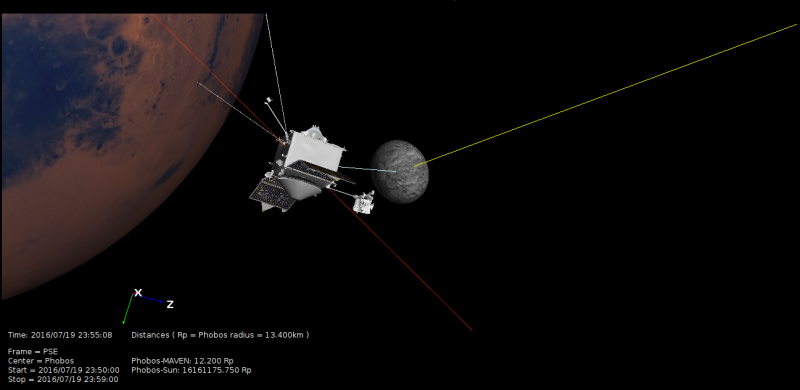Does the Martian moon Phobos reflect protons from the solar wind?
In the Solar System, the surfaces of celestial bodies without atmosphere are directly bombarded by the solar wind protons emitted by our star. Through poorly understood mechanisms, the surface of the Moon in orbit around the Earth acts as a mirror that reflects about 1% of the incident protons back into space. To understand this phenomenon of reflection of the solar wind, a team of scientists – some of which are attached to IRAP, a CNRS-INSU laboratory – has tried to characterize it to another celestial body: the small moon Phobos which orbits the planet Mars.
Phobos has been repeatedly surveyed by the European probe Mars Express (MEX). Previous work suggests that the ion instrument of MEX would have detected during two flybys of Phobos protons reflected by the surface of the small moon (1). In this new paper, scientists examine for the first time data from the American probe MAVEN which has flyby Phobos tens of times. They use measurements of the interplanetary magnetic field of MAVEN and different models to identify the origin of the protons observed near Phobos. During the 15 closest flybys of Phobos by MAVEN, no trace of protons reflected by the small moon was found, while it is shown that the probe should clearly have seen them if the signal detected by MEX was real. This calls into question the past observations of MEX, especially since a model of proton generation in the extended atmosphere of Mars has shown that MAVEN observed protons coming from Mars at each flyby of Phobos! It is thus very likely that MEX confused protons of Martian origin with protons reflected by Phobos.
Following the observations of MEX and MAVEN, the mystery of the solar wind protons reflected by Phobos remains. From 2024, the Japanese probe MMX will try again to detect these protons to characterize the underlying reflection phenomenon. Our article shows that this observation will be extremely difficult and that the protons coming from the atmosphere of Mars constitute an important background noise.



Further Resources
- Scientific Publication : MAVEN Proton Observations Near the Martian Moon Phobos: Does Phobos Backscatter Solar Wind Protons? by A. Deniau, Q. Nénon, N. André, C. Mazelle, A. Rahmati, C. M. Fowler, A. R. Poppe, J. P. McFadden, J. S. Halekas, E. Penou, Geophysical Research Letters, 2022. https://doi.org/10.1029/2022GL101014
IRAP Contacts
- Nicolas André, nicolas.andre@irap.omp.eu
- Christian Mazelle, christian.mazelle@irap.omp.eu






